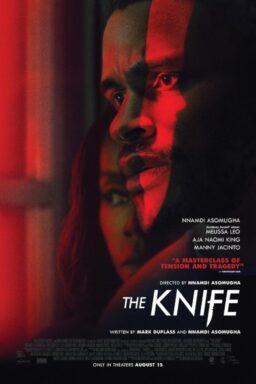
Whether or not you believe that “Broken Embraces” is Pedro Almodόvar’s best film, one thing cannot be denied: it’s a film that so passionately celebrates cinema and the filmmaker’s love for it.
Multiple stories frame a complex narrative in “Broken Embraces.” Mr. Almodόvar trains his lens on Penélope Cruz, his muse. She plays Lena, a woman caught between passion and misery in the film, set in Madrid in the early 1990s and 2008. A film director (Lluís Homar) is blighted by the past while also recalling fond memories in the present as he hibernates in the afterglow of a vibrant affair with Lena, whom he directed during the nineties in a comedy. Back then he was Mateo Blanco. Now, in the early 21st century he is Harry Caine – a hurricane of regrets, mysteries and opportunities. There’s Lena’s husband Ernesto (José Luis Gόmez), a billionaire business magnate who has helped Lena pre-marriage and produces Blanco’s film “Girls With Suitcases.” Keeping Blanco in line and on schedule with the film is his agent Judit (Blanca Portillo), and that isn’t an easy task.
Mr. Almodόvar cleverly intertwines the threads of tragedy and tenderness in “Broken Embraces,” a film that also depicts the cynicism, frustrations and triumphs of the filmmaking process with gusto. A whirlwind of camera movement, some of it volatile, swirling like a hurricane, crystallizes the film’s urgent tempo in several shots. Cameras are as much a character as any live being. The different cameras function as markers of the past and present and often as their intersection, creating impressions that sometimes indict or uplift but always captivate us by projecting feeling.

One scene in the latter part of the film accomplishes this feeling and emotion but there’s also impenetrability: the closer we get to feeling, the further removed we are, even if we are moved in the process. To this end and in other ways, there’s sensory truncation and sensual glory displayed in the director’s adventure, accompanied by Alberto Iglesias’ beautiful music score.
Unmistakably, Mr. Almodόvar treasures cinema so deeply. He adores it as much as he does Ms. Cruz, whose Lena forms the soul of his latest effort. “Broken Embraces” is undoubtedly a personal statement about the director’s relationship with his most treasured collaborator. Mr. Almodόvar’s films – often warm and bright (“Women on the Verge of a Nervous Breakdown”) and occasionally cold and harsh (“Bad Education“) – seem to weep with joy over the beauty of film and its history.

Whether he utilizes Hitchcockian devices or evokes the wrenching emotional pain informing Ingmar Bergman’s work, Mr. Almodόvar’s unique skill and vision in conveying story, staging, comedy and irony converge powerfully in “Broken Embraces.” References to Jeanne Moreau in the 1957 film “Elevator To The Gallows” are no accident. Louis Malle’s film noir captures the beauty and mystery of Ms. Moreau. Mr. Almodόvar achieves the same result, chronicling Ms. Cruz as a mysterious beauty while updating her iconic status with a playful nod to the Belgian-born Audrey Hepburn in a montage.
“Broken Embraces,” hilarious at times, is a film that should be seen at least twice to be appreciated. On my second viewing of the film I noted that like “Eyes Wide Shut” the colors red and blue appear together or separately in virtually every single shot. Mr. Almodόvar, like Mr. Bergman, is a big fan of the color red. The film’s costumes are sometimes enveloped in both colors, representing the heartbeat of these characters, some of whom are funny, others whom are tormented and still others who harbor secrets. Mr. Almodόvar’s film plays like a valentine to Ms. Cruz, but just as importantly plays like a valentine to life itself.
“Broken Embraces” is currently playing in U.S. theaters and will be released on Blu-Ray and DVD in the U.S. on March 16. •Visit Omar Moore’s wide-ranging film site at popcornreel.com.










